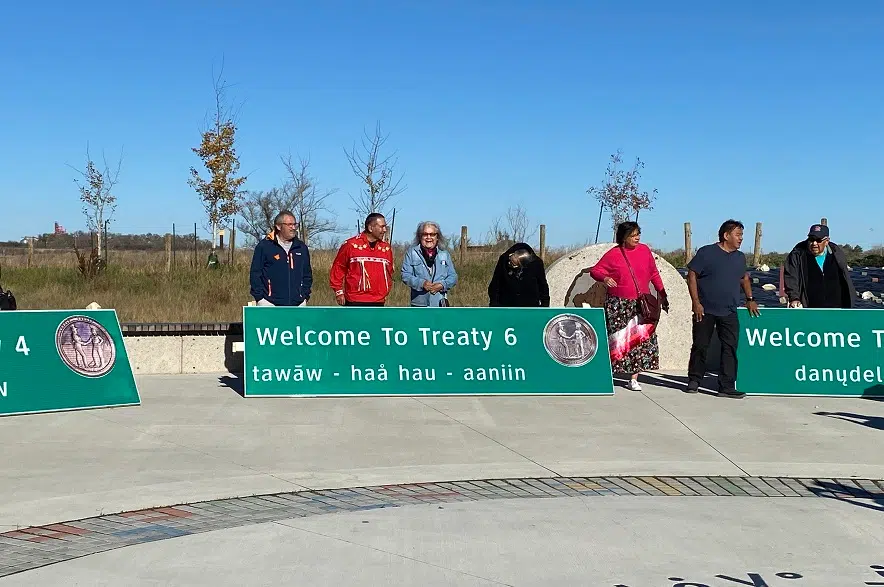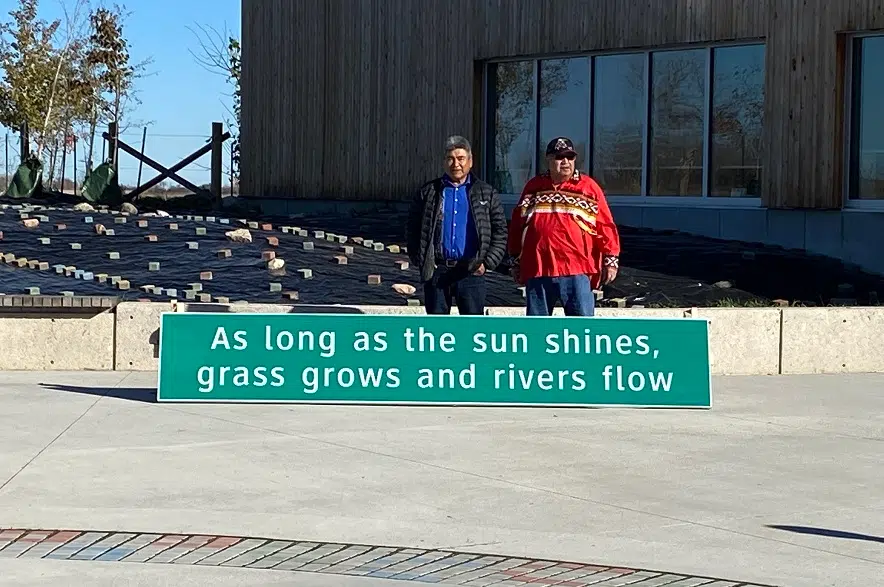Last fall, Saskatchewan became the first province to erect treaty border signs along its highways, and four new sets of signs are being added.
The project started several ago with the help of the public, and on Thursday new signs for the borders of Treaty 2, Treaty 4, Treaty 6 and Treaty 10 were unveiled.
The signs will go on Highway 39 near Estevan to mark the Treaty 2-Treaty 4 boundary, the Trans-Canada Highway 1 near Moosomin to also mark another Treaty 2-Treaty 4 boundary, the Yellowhead Highway near Lanigan to mark the Treaty 4-Treaty 6 boundary, and Highway 2/102 near La Ronge to mark the Treaty 6-Treaty 10 border.
Mary Musqua-Culbertson, Saskatchewan’s treaty commissioner, explained the benefits to having the signs up along provincial highways.
“The importance of driving along our roadways and looking up and seeing a sign that acknowledges the treaty territory we are in, it’s education. It’s a conversation starter,” said Musqua-Culbertson.
“I know for myself and for many of my family and relatives and friends, when we drive by that highway sign, you feel so much pride.”
Musqua-Culbertson added the signs can provide a learning opportunity for some people who may not know about treaties or their history.
“We still have kids coming out of high school and going to university never having learned about what treaty territory they’re in (or) heard about residential schools, except from social media,” said Musqua-Culbertson.
“We still have a long way to go – we really do – but this has been a start.”
Saskatchewan became the first province to erect treaty border signs along highways last fall. (Will Mandzuk/650CKOM)
Under each sign is a secondary sign that says “As long as the sun shines, grass grows and rivers flow.” The commissioner explained that the message goes all the way back to when treaties were originally being negotiated.
“First Nations asked ‘How long will these promises last, these things you are making promises to us?’ and the commissioner at the time said ‘As long as the sun shines, grass grows and rivers flow, that’s how long you will have these things,’ ” explained Musqua-Culbertson.
Jim Lemaigre, MLA for Athabasca, said the signs are part of the provincial government’s commitment to reconciliation, and noted that the treaty commission has done a tremendous amount of work to educate the province around treaties.
“This is our part, as a province, of how we can contribute,” said Lemaigre. “Acknowledging the treaty boundaries is a way of educating the people coming to the province and that live in the province.”
He said the hope is to continue adding more of the treaty signs to highways across the province.
Each sign incorporates languages specific to their locations and depict the treaty medals provided to First Nations following the treaty negotiations.
More information on the specific signs and the meanings behind them can be found below.








